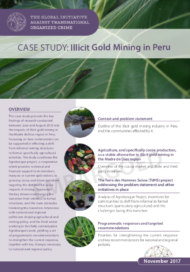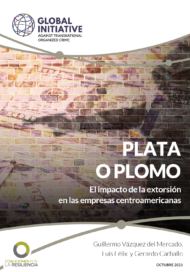Posted on 06 Oct 2013
October was a big month for “sting” operations: those interdiction efforts where covert operations are used to take out high value targets in the upper echelons of a criminal of a criminal operation. The globalization of organized crime is placing a burden on law enforcement to address extensive criminal networks which partly reside in countries with weak, corrupt or complicit state institutions. Stings are thus one of the few tools which law enforcement officials have for arresting international criminals who otherwise have the money and connections to avoid arrest and extradition in these weak jurisdictions.
The DEA indictment of the Guinea Bissau kingpin, Bubo Na Tchuto, is one such example. In this dramatic story which unfolded in April 2012, two DEA operatives, posed undercover as a cocaine trafficker and a cocaine supplier, negotiated a deal by which Na Tchuto agreed to receive the drug off the coast of Guinea-Bissau and to stash it in storage houses there pending its eventual shipment to the United States, where it would be sold for the financial benefit of the Colombian insurgent criminal group, the FARC. Na Tchuto further agreed that a portion of the cocaine would be used to pay Guinea-Bissau government officials for providing safe passage for the cocaine through Guinea-Bissau. It appears that Na Tchuto and his associates also agreed to store weapons to be supplied to the FARC to combat American forces in Colombia, including surface- to-air missiles and AK-47 assault rifles with grenade launchers.
In a rather less traditional sting, on the 14th October the Belgian police announced they had reeled in the infamous Somali pirate, Afweyne. One of the earliest and most successful of the Somali pirates acting in the Gulf of Aden, he is reported to have earned ransoms in excess of $10 million. In order to capture him, the Belgian Police posed as filmmakers and hired him to consult in a documentary on piracy, then arrested him as soon as he touched European soil.
But how effective really is the sting as a means of combatting criminal behaviours? It certainly is an expensive, energy intensive exercise, and the results of high-value targeting have been very mixed, according to a recent paper presented by Brookings. The argument of this paper is that a focus on the kingpins is effective if the strategy is to fragment the criminal market, but it needs to be complimented with a mid-level strategy and investments increasing the presence, legitimacy and authority of the state in a multifaceted fashion in those areas beset by organized crime. The typically cited, though controversial, success story is Colombia’s strategy to break up the Medellín and Cali cartel, which resulted in dramatically less violence, though arguably not a reduction in illicit trade flows. Similar efforts by the former Government of Mexico to address their criminal groups, most notably the infamous Tijuana cartel upon whom the movie “Traffic” was based, was less successful. Levels of gang-related violence increased, as criminal groups sought to replace fallen leaders. (In a tragic-comic aside, also this month, 3 gunmen disguised as clowns shot and killed Francisco Rafael Arellano Felix, the sole remaining of the three brothers of the Tijuana Cartel, at a five year old birthday party – prompting a 15 minute “laugh-a-thon” protest by the Mexican clown association). A policy brief by the ISS on the impact of the Guinea Bissau sting operation also showed that international interventions can have the negative by product of further undermining weak national state institutions, and reducing confidence in the state’s ability to deliver justice.
Where high-value targeting has shown value is in the one-man show. In the other big sting operation of October, Ross William Ulbricht, also known as the Dread Pirate Roberts, manager of the most sophisticated and extensive criminal marketplace, the Silk Road, was seized by police, closing down this dark-web site which is reported to have 900,000 registered users and had conducted over $1.2 billion worth of transactions predominantly narcotics, but also malicious software and other illicit goods and services. In this operation, an undercover US Federal Agent built up a relationship with Ulbricht by posing as a smuggler with a large amount of narcotics to sell. The astonishing twist in the tale came when Ulbricht later requested the assistance of the undercover agent to have one of his employees killed, something he had arranged previously for a mere $80,000. Ulbricht is now in New York awaiting trial.



